NASA-2023 Annular Eclipse: Where & When & AXIOS: Mapped: “Ring of fire” eclipse
The Saturday, Oct. 14, 2023, annular solar eclipse will cross North, Central, and South America. It will be visible in parts of the United States, Mexico, and many countries in South and Central America.
In the U.S., the annular solar eclipse begins in Oregon at 9:13 a.m. PDT and ends in Texas at 12:03 p.m. CDT.
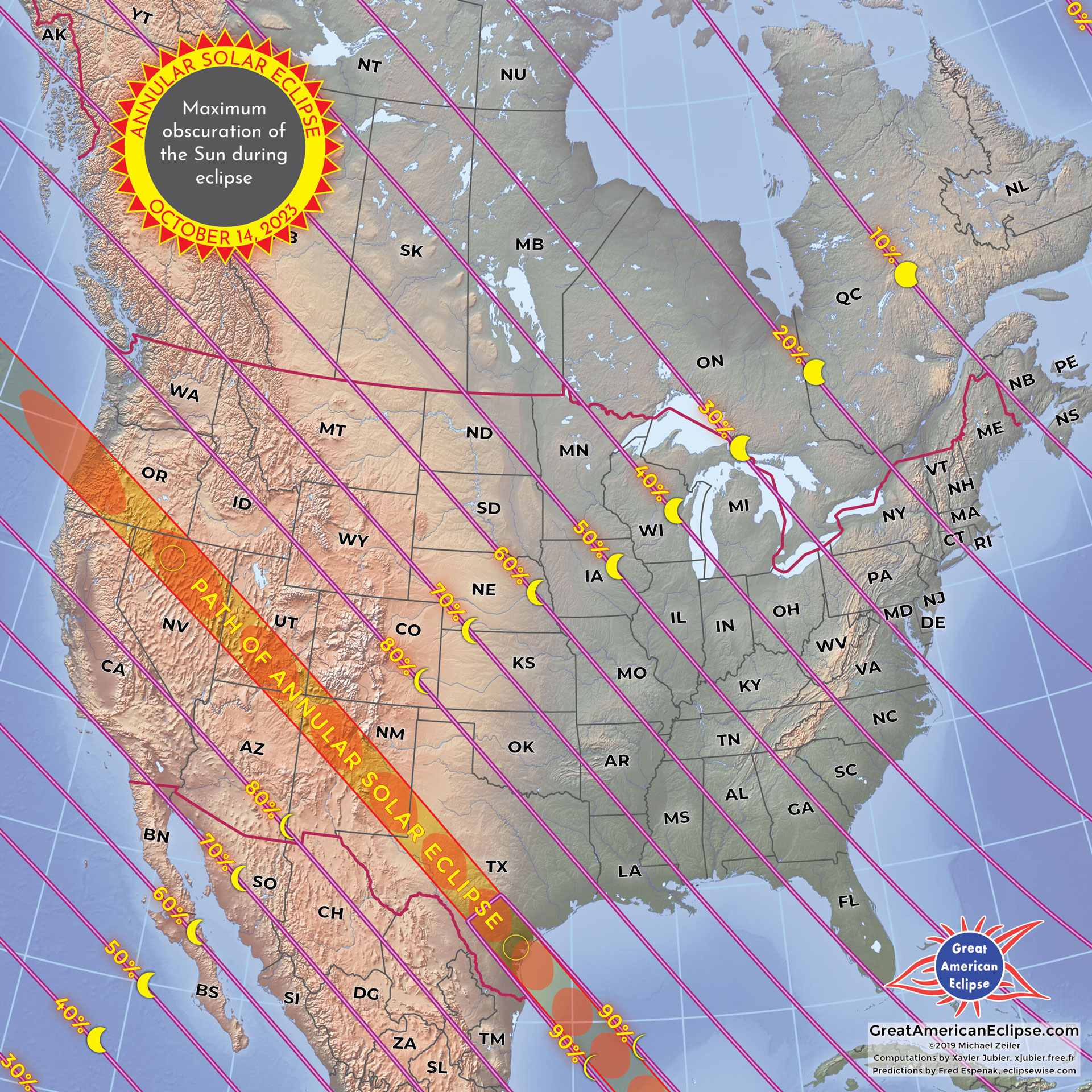
The path of the annular solar eclipse next visits Mexico and Central America, passing over Guatemala, Belize, Honduras, Nicaragua, and Panama.
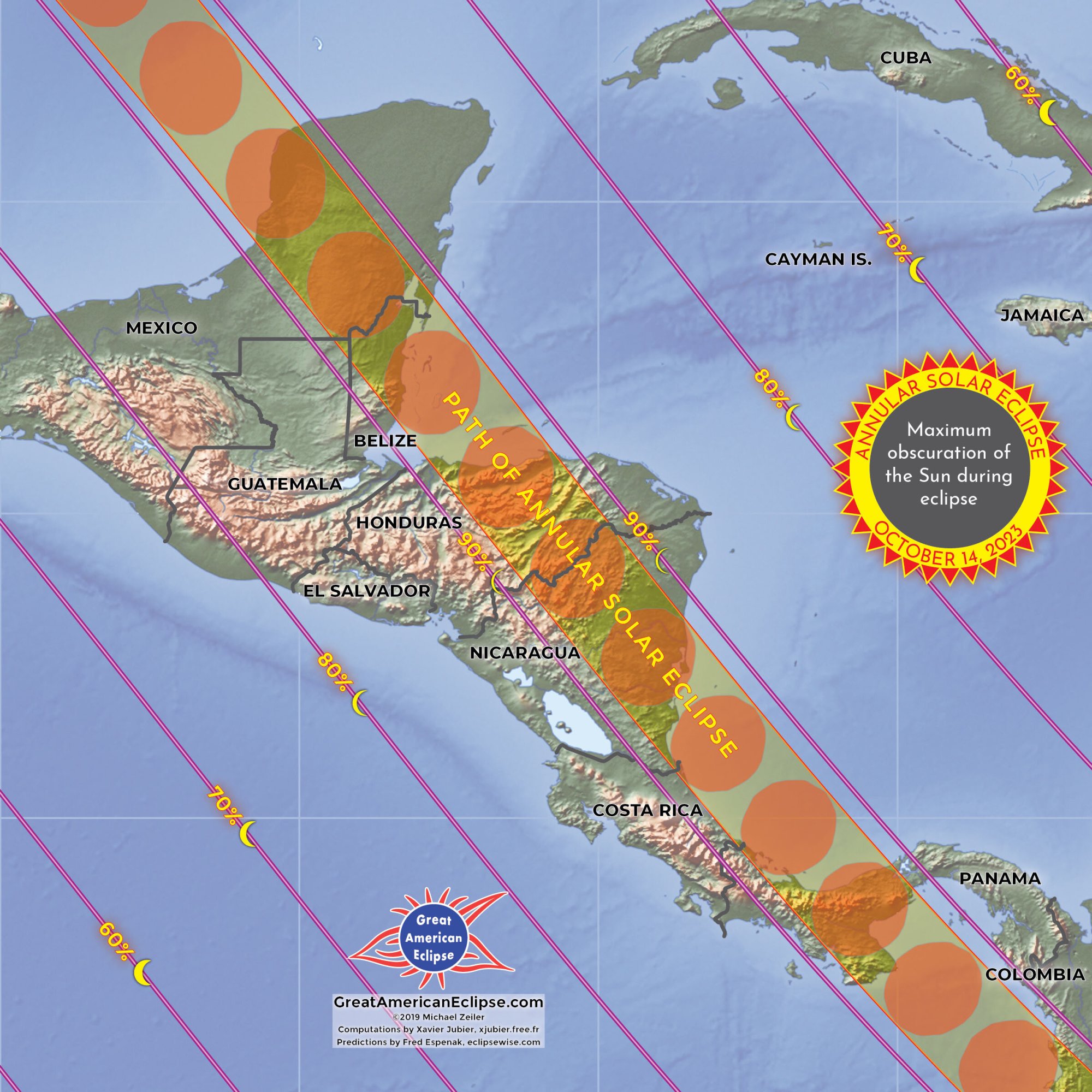
The annular eclipse crosses into South America in Colombia. It passes over Northern Brazil before ending at sunset in the Atlantic Ocean.
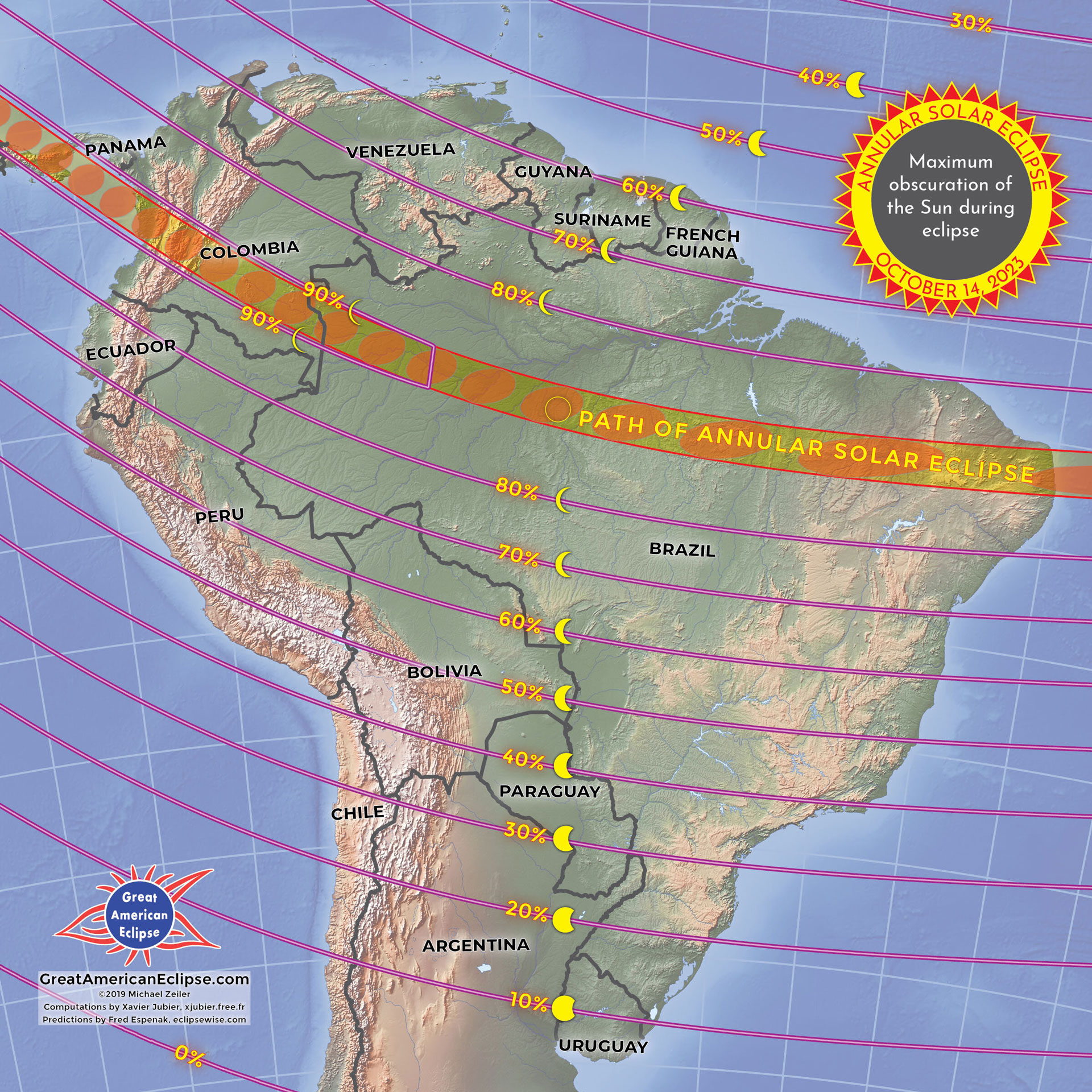
This table provides the time that the eclipse begins in a city in each state in the United States in the path of the annular eclipse. These areas will also experience a partial eclipse before and after these times.
|
Location
|
Partial Eclipse Begins
|
Annularity Begins
|
Maximum
|
Annularity Ends
|
Partial Eclipse Ends
|
|---|---|---|---|---|---|
|
Eugene, Oregon
|
8:06 a.m. PDT
|
9:16 a.m. PDT
|
9:18 a.m. PDT
|
9:20 a.m. PDT
|
10:39 a.m. PDT
|
|
Alturas, California
|
8:05 a.m. PDT
|
9:19 a.m. PDT
|
9:20 a.m. PDT
|
9:21 a.m. PDT
|
10:43 a.m. PDT
|
|
Battle Mountain, Nevada
|
8:06 a.m. PDT
|
9:21 a.m. PDT
|
9:23 a.m. PDT
|
9:25 a.m. PDT
|
10:48 a.m. PDT
|
|
Richfield, Utah
|
9:09 a.m. MDT
|
10:26 a.m. MDT
|
10:28 a.m. MDT
|
10:31 a.m. MDT
|
11:56 a.m. MDT
|
|
Albuquerque, New Mexico
|
9:13 a.m. MDT
|
10:34 a.m. MDT
|
10:35 a.m. MDT
|
10:39 a.m. MDT
|
12:09 p.m. MDT
|
|
San Antonio, Texas
|
10:23 a.m. CDT
|
11:52 a.m. CDT
|
11:54 a.m. CDT
|
11:56 a.m. CDT
|
1:33 p.m. CDT
|
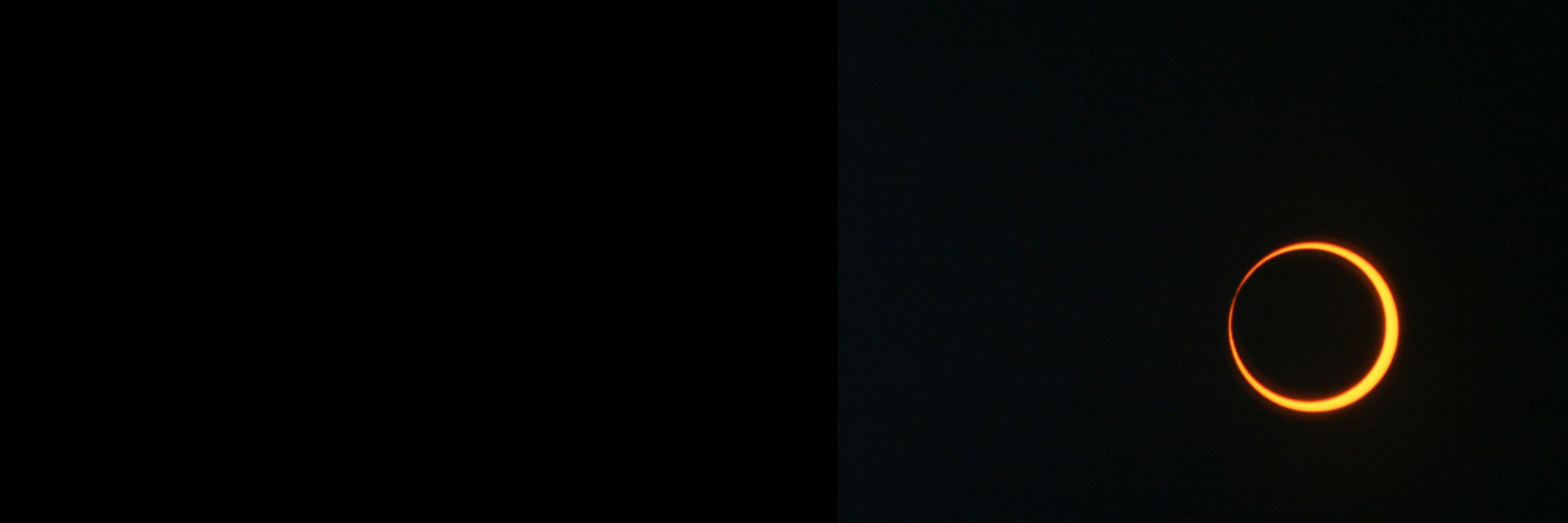
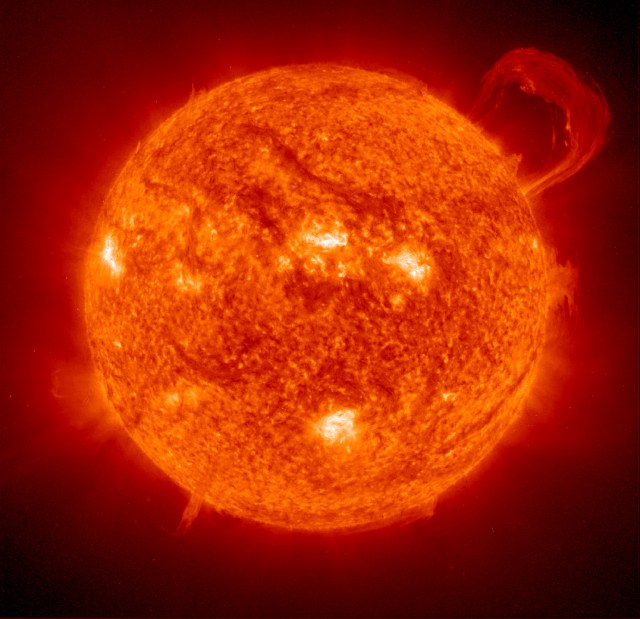
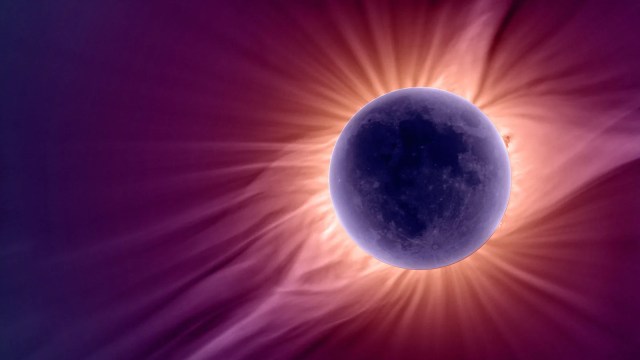
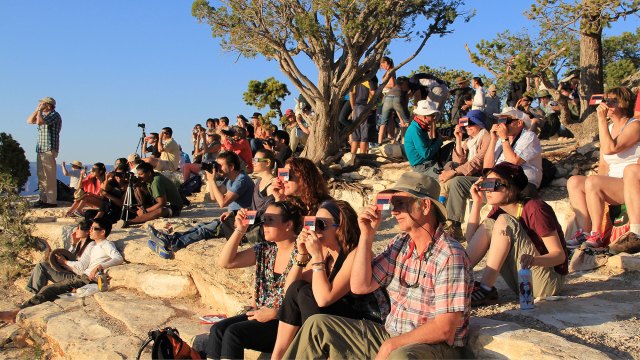

 Mapped: “Ring of fire” eclipse
Mapped: “Ring of fire” eclipse
 What’s next: Saturday’s solar eclipse is practice for the next celestial event — a total eclipse that will occur on April 8, 2024.
What’s next: Saturday’s solar eclipse is practice for the next celestial event — a total eclipse that will occur on April 8, 2024.
Leave a Reply